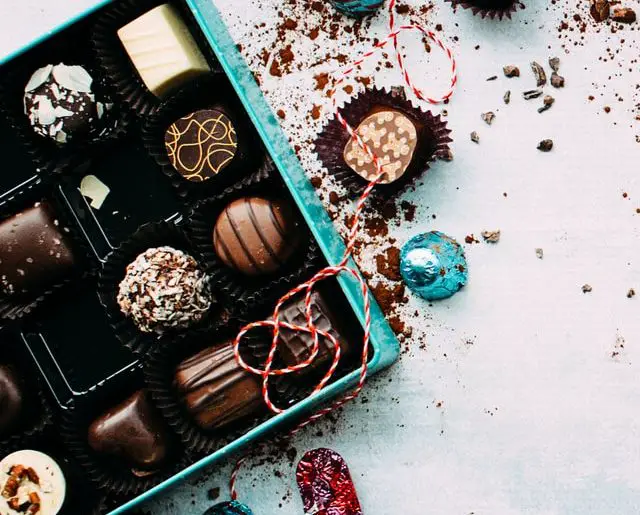Several years ago, my husband and I had the opportunity to visit Costa Rica. There, we were able to go on a “chocolate tour” where we observed every step taken to transform cacao fruit into the delicious chocolate we know and love. Here’s a quick overview of the process of how chocolate is made.
1. The Cacao Tree
Chocolate comes from the fruit of the cacao tree. Cacao trees thrive in hot, humid areas within about 20 degrees of the equator. They are found in South and Central America and other regions such as West Africa and South/Southeast Asia.
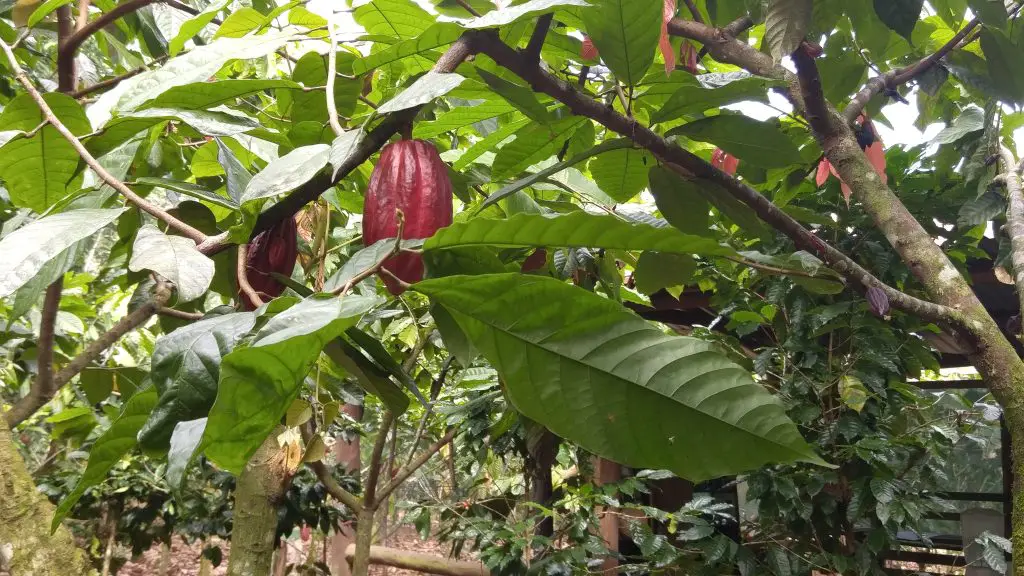
2. Cacao Fruit
Cacao pods are football-shaped, eight to fourteen inches long and come in various colors, including green, yellow, orange, red, purple, or maroon. They contain about 50 seeds (cocoa beans) encased in a white pulp, and honestly, it’s pretty gross-looking. I had the opportunity to try the cacao fruit, and it is slimy and slightly sweet, while the pods are bitter and sour.
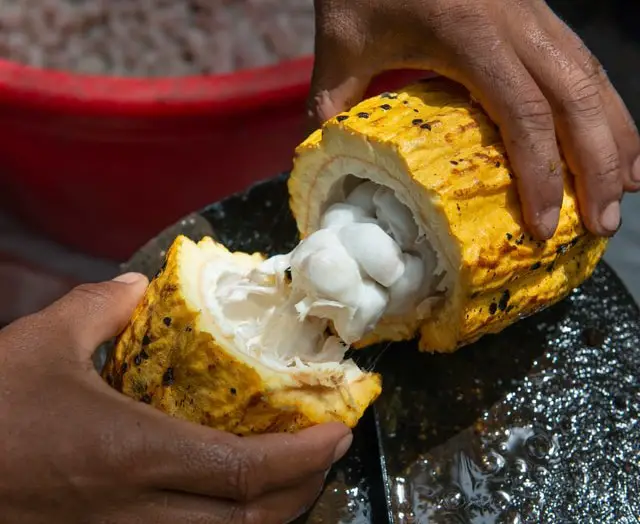
3. Harvesting
The fruit has to be hand-harvested as the trees are fragile, and machines for harvesting would injure the trees. The harvested pods have the beans removed and then left to ferment in fermentation trays for two to seven days. After fermentation, the beans are dried in the sun on platforms for 3-5 days and are rotated several times a day for complete drying. You can also use rotary dryers to dry the beans.
4. Roasting
The next step is cleaning the beans and removing debris. This is typically done at a chocolate factory. The cleaned beans are roasted in rotating ovens. The roasting process helps kill any mold or fungi present and helps separate the hull from the inner bean. It also enhances the flavor of the bean to give the chocolate its signature taste.
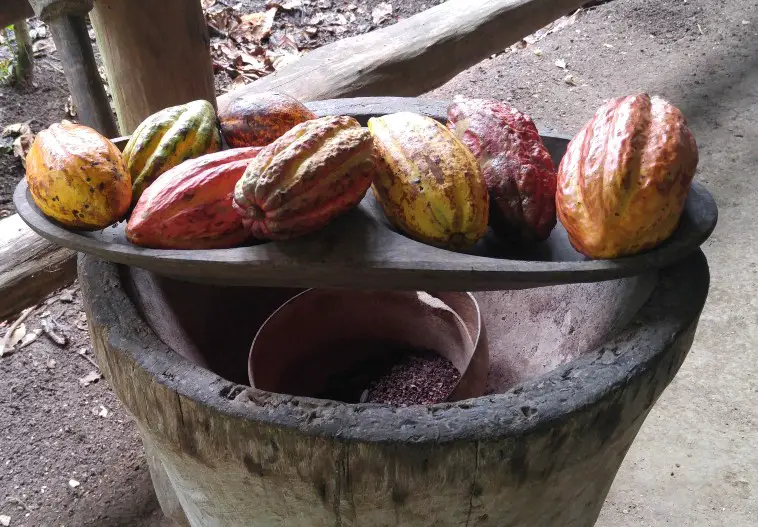
5. Winnowing
Winnowing by Hand
Next, the roasted, cracked beans have their hulls removed in a process called winnowing. I was able to observe this being done by hand. We were shown the hand winnowing process being done in two ways.
The first way was taking a bowl containing the cracked beans and their hulls and slowly pouring them into another bowl. While pouring, the person doing the winnowing blows on the beans and hulls, and the lightweight hulls are blown away while the beans fall into the bowl.
The second way demonstrated was to circulate the beans by gently tossing them into the air and blowing the lightweight hulls away.
Winnowing by Machine
If being done in a factory, then a winnowing machine is used. In a winnowing machine, the pieces of cocoa bean and their shells are sent down several screens while being shaken vigorously. They then fall through chutes under the screens, and the hulls and dust are sucked away by a vacuum system.
6. Cocoa Nibs
After winnowing, the remaining piece of the bean is called a cocoa nib which is ground into a thick paste called chocolate liquor (which does not contain alcohol). A small batch of cocoa nibs can be ground by hand with a mortar and pestle. Machine rollers are also used to grind them.
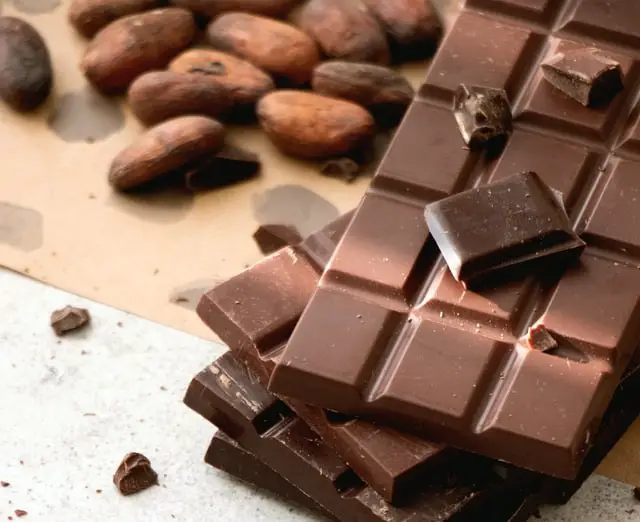
7. The Final Product
Chocolate liquor is the primary source of unsweetened baking chocolate. At this point, the chocolate is completely unsweetened and extremely bitter. To make chocolate taste good and have the smooth texture most of us expect, you need to add additional ingredients.
Dark chocolate: cocoa butter, chocolate liquor, lecithin, vanilla, and sugar.
Milk chocolate: cocoa butter, chocolate liquor, lecithin, vanilla, sugar, milk fats/solids.
White chocolate: cocoa butter, lecithin, vanilla, sugar, milk fats/solids.
Frequently Asked Questions
Dark chocolate, cocoa powder, and cocoa nibs do not contain milk. However, milk chocolate and white chocolate do typically contain milk fats/solids.
The chocolate-making process is quite complex and does require some special equipment. While it is not for the faint-hearted, it is possible. I recommend this site https://chocolatealchemy.com/how-to-make-chocolate-the-complete-text-guide#chocolate-making-at-home-101-1 if you are interested in making chocolate at home.
The chocolate-making process used to be done completely by hand, including winnowing and grinding cocoa nibs. However, machines can now complete the drying, winnowing, and grinding process. Most modern chocolate is created in a factory and is highly refined and mass-produced.
Are you craving some chocolatey goodness now? If so, I highly recommend my Triple Chocolate Cookies. Happy Baking!

